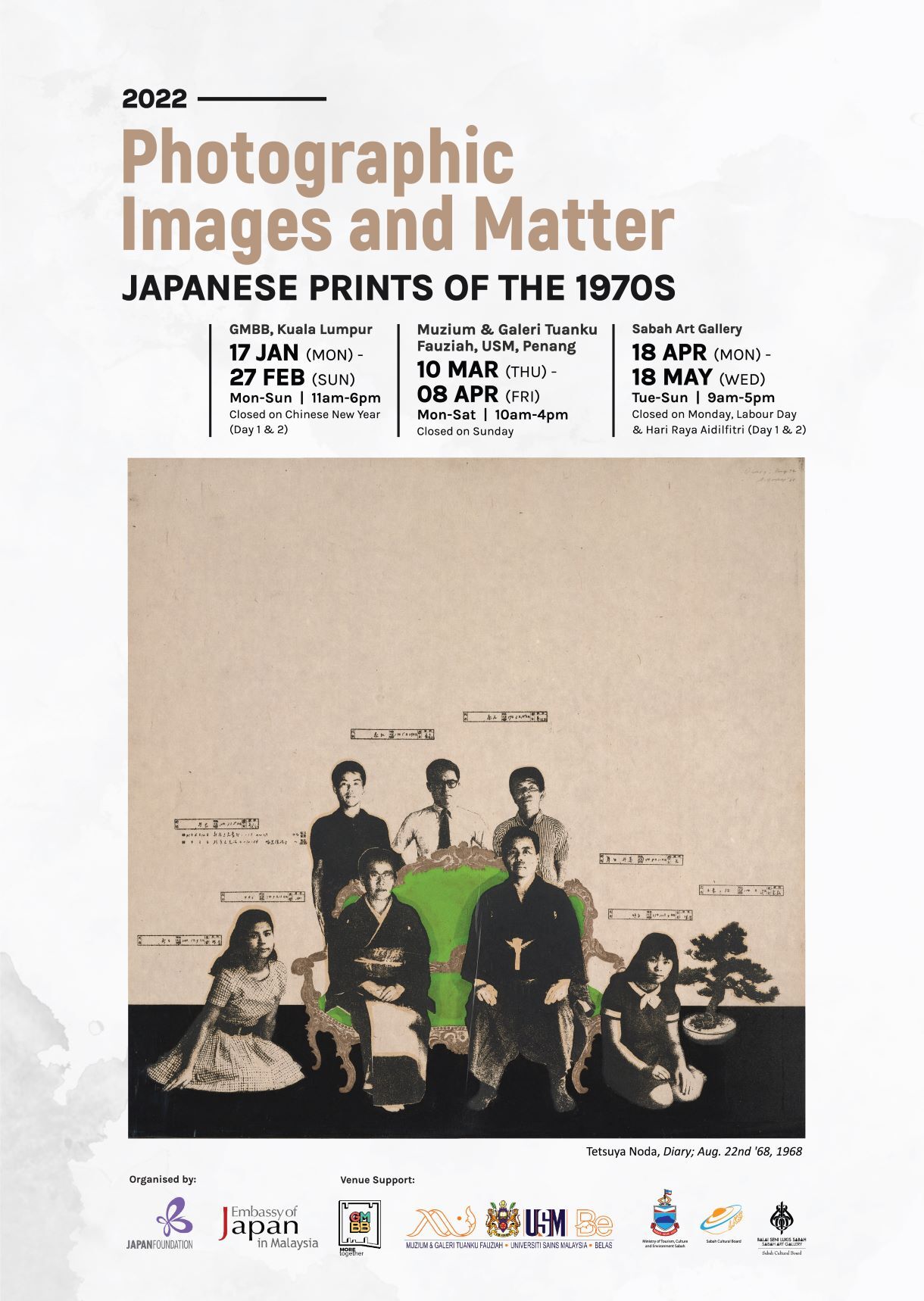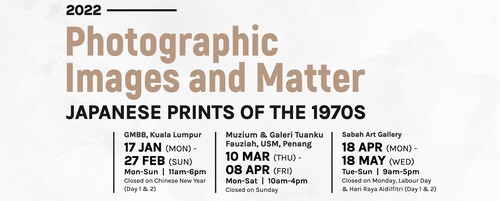Take a glimpse into art forms that transformed the global art scene and explore the world of 1970’s Japanese prints at “Photographic Images and Matter: Japanese Prints of the 1970s”.
The exhibition features on print expressions from the 1970s as seen in the work of 14 artists who helped develop a print movement in the world of Japanese contemporary art in the 1970’s. During the golden age of art in Japan, there was a strong focus on materials such as print blocks, paper and ink, used to create artworks that were one-of-a kind. These subjective expressions, based on photographic images and matter, greatly expanded the print medium while also helping to shape trends in contemporary art as a whole.
This exhibition will be touring Kuala Lumpur, Penang and Sabah at the following dates:
| [ENDED] 17 January to 27 February 2022 Level 5, GMBB, Kuala Lumpur |
| [ENDED] 10 March to 8 April 2022 Muzium & Galeri Tuanku Fauziah, USM, Penang |
| [HAPPENING NOW] 19 April to 18 May 2022 Sabah Art Gallery, Sabah Open Tuesday – Sunday, 9:00 AM – 5:00 PM [Closed on Monday, Labour Day & Hari Raya Aidilfitri (Day 1 & Day 2)] Museum admission fee applies. Click here for details. |
Stay tuned as we will be sharing more about this exhibition soon!
This exhibition is organised by The Japan Foundation, Kuala Lumpur and Embassy of Japan in Malaysia, with support from GMBB, Kuala Lumpur, Muzium & Galeri Tuanku Fauziah, Universiti Sains Malaysia, Penang & Sabah Art Gallery.

ABOUT THIS EXHIBITION
This exhibition focuses on print expressions from the 1970s as seen in the work of 14 artists who helped develop a print movement in the world of Japanese contemporary art. The exhibition is divided into two sections: “The Age of Photographic Images,” which focuses on the use of photographic images in the print medium, and “Images of Autonomous Matter,” which focuses on works that were shaped by the intentions of matter.
While on the one hand the period is notable as the golden age of works in which photographic images were converted into prints, the 1970s also saw the rise of a new print movement in which a strong emphasis was placed on allowing materials (matter) used in print-making, such as print blocks, paper, and ink, to speak for themselves. These subjective expressions, based on photographic images and matter, greatly expanded the print medium while also helping to shape trends in contemporary art as a whole.
In 1957, the Japanese government launched the International Biennial Exhibition of Prints in Tokyo as a special feature of its postwar culture policy. Awarded the International Grand Prize in the sixth edition of the biennale in 1968, Tetsuya Noda transformed photographic portraits of his family into prints. His works were significant in that they exemplified the huge changes that were underway in prints internationally, confirmed that there were parallels between trends in contemporary prints and contemporary art, and suggested future developments in contemporary art.
In the 1970s, there was a rapid increase in Japanese works that adopted Noda’s method of converting photographs into prints, leading to a golden age in the medium. The era also saw the rise of works that placed special importance on allowing the materials (matter) used in printmaking (print blocks, paper, ink, etc.) to speak for themselves, which was lauded as a new trend in the medium. Another significant trend was the emergence of prints with an extremely strong materiality in which the image was transformed into a material.
These autonomous expressions of photographic images and matter in the 1970s dramatically expanded the field of prints and also exerted a strong influence on trends in contemporary art. While introducing important trends in prints during the 1970s, this exhibition focuses on print-inspired trend in contemporary art of the same period. The exhibition is divided into two sections: “The Age of Photographic Images,” which focuses on the use of photographic images in the print medium, and “Images of Autonomous Matter,” which focuses on works that were shaped by the intentions of matter.
Section 1: An Age of Photographic Expression
With the increase in photographs and printing, and the proliferation of the powerful medium of television, which accompanied the expansion of production and consumption in the 1960s and ‘70s, Japanese society came to be overrun with images. During this period, new techniques such as silkscreening and offset printing, which made it easy to transform photographic images, quickly took hold. Under these circumstances, numerous works emerged in which photographic images were converted into prints through the use of photoengraving, leading to a new mainstream in printmaking. In many of these works, all traces of handiwork were eliminated in order to suppress emotional content and encode the image. Exhibiting artists (in order of work): Tetsuya Noda, Kosuke Kimura, Akira Matsumoto, Satoru Saito, Hideki Kimura, and Sakumi Hagiwara.
Section 2: Images of Autonomous Matter
Between about 1968 and the early 1970s, a new trend emerged in art in which simple substances as stone, wood, paper, cotton, and steel sheets were presented as works, sometimes alone and sometimes in combination with each other. As an extension of this movement, print works, which limited human involvement and manipulation of the image to a bare minimum, and set out to allow materials (matter) such as print blocks, paper, and ink to speak for themselves, received attention for expanding the concept of the print and giving rise to a new trend in the medium. This period also saw the materialization of images, a conscious movement that had begun in the 1950s, and an approach to production that centered on expressing something spiritual through matter, which resulted in works with a strong material quality.



